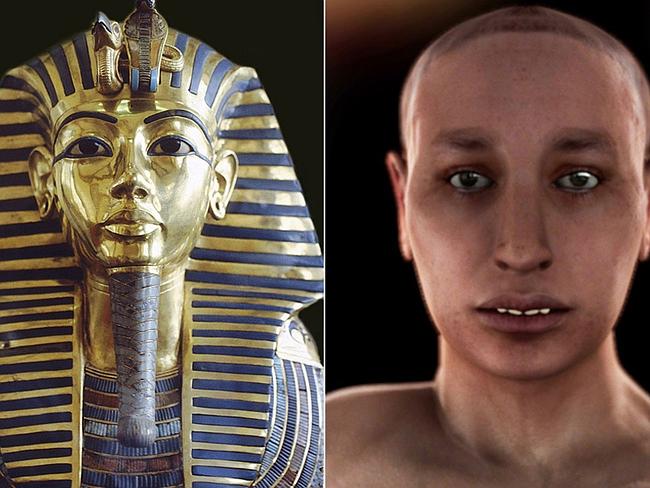Autopsy unmasks King Tut’s true face, which has been revealed was not the most attractive, Artnet News reported.
The golden burial mask of King Tutankhamen shows a young man with strong, idealized features: a strong jaw, full lips, high cheek bones, and a regal brow. Thanks to high-tech 3D imaging, the truth has finally been unwrapped, and it is far less handsome.
Tut underwent a virtual autopsy, and a 3D model of the pharaoh was generated, using CT scans, genetic analysis, and over 2,000 digital scans.
Previous attempts to reconstruct Tut’s visage were fairly attractive, based on the theories that he had sustained facial injuries in a fatal chariot race crash or when he was murdered.
This new research not only indicates that Tut was born with the misshapen features and prominent overbite that he took to his grave at 19, but that he was physically unable to participate in chariot racing. A fracture in Tut’s skull is now believed to have been sustained after his death.
The boy king, the new science reveals, was sickly and crippled, with twisted, malformed hips. He suffered from epilepsy and malaria, and had to walk with a cane due to a club foot. It would have been impossible for him to stand in a fast moving chariot. So what was likely responsible for these deformities? Incest, which was not considered taboo in ancient Egypt. Genetic testing strongly indicates that King Tut’s parents were brother and sister, and Tut is known to have married his half-sister at the tender age of about 10.
King Tut is the most famous ancient Egyptian mummy to have been thoroughly examined by modern science. Earlier, the Saint Louis Art Museum in Missouri gave three of its mummies CT scans, while a recent exhibition at London’s British Museum offered interactive 3D imagery for eight mummies based on CT scan results.
The young pharaoh’s tomb has also undergone 3D analysis so detailed that scientists have created a perfect facsimile of the site, discovered by Egyptologist Howard Carter in 1922.


